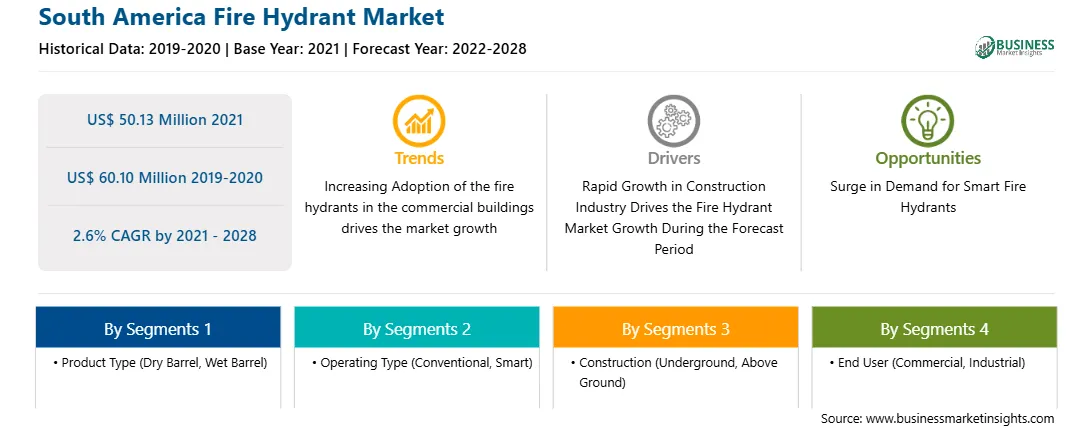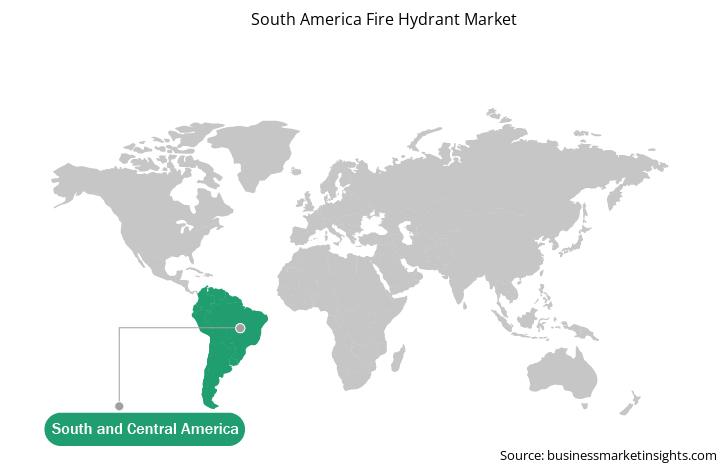With the growing economy, innovative technologies have been initiated to transform the urban landscape. The World Bank outlines a technology-intensive smart city with interconnected networks and sensing technologies. Most of the upcoming cities would have high-rise buildings and a dense concentration of buildings, which would make it mandatory to address fire situations to mitigate any loss of property and life. With the help of emerging technologies such as Internet of Things IoT, the effectiveness of fire response can be increased. An IoT-enabled sensing technology with gateways connected to a backbone cloud-based software & apps is an important requirement for smart cities and buildings to enable fire hydrants. The advancement of wireless technologies, majorly for IoT-enabled sensors, and easy access to internet connectivity and bandwidth is another aspect contributing to the adoption of fire hydrants. IoT sensors are installed to continuously monitor electrical systems and identify active heat sources. Once a temperature spike is identified, a notification is sent immediately to take necessary inspections to prevent potential catastrophes. The IoT temperature sensors overcome the challenges of old smoke detectors by identifying ignited fires much faster before they emit smoke. Therefore, with the increasing conceptualization of smart cities, smart offices, and smart buildings across the region, the scope of integration of IoT-based fire hydrants would also expand, thereby influencing the SAM market growth.
The government bodies of SAM countries have taken an array of actions to protect their citizens and contain the COVID-19 spread. The governments of various countries in SAM are taking several initiatives to protect people and control COVID-19’s spread through lockdowns, trade bans, and travel restrictions. The spread of the virus has interrupted the manufacturing and supply of different fire safety products in buildings from residential to industrial sectors. With the expansion in the manufacturing industries in the region, the scope of using fire hydrants in them is also expected to rise over the forecast period.
With the new features and technologies, vendors can attract new customers and expand their footprints in emerging markets. This factor is likely to drive the SAM fire hydrant market. The SAM fire hydrant market is expected to grow at a good CAGR during the forecast period.
SAM Fire Hydrant Market, by Country
Strategic insights for the South America Fire Hydrant provides data-driven analysis of the industry landscape, including current trends, key players, and regional nuances. These insights offer actionable recommendations, enabling readers to differentiate themselves from competitors by identifying untapped segments or developing unique value propositions. Leveraging data analytics, these insights help industry players anticipate the market shifts, whether investors, manufacturers, or other stakeholders. A future-oriented perspective is essential, helping stakeholders anticipate market shifts and position themselves for long-term success in this dynamic region. Ultimately, effective strategic insights empower readers to make informed decisions that drive profitability and achieve their business objectives within the market.

| Report Attribute | Details |
|---|---|
| Market size in 2021 | US$ 50.13 Million |
| Market Size by 2028 | US$ 60.10 Million |
| Global CAGR (2021 - 2028) | 2.6% |
| Historical Data | 2019-2020 |
| Forecast period | 2022-2028 |
| Segments Covered |
By Product Type
|
| Regions and Countries Covered | South and Central America
|
| Market leaders and key company profiles |
The geographic scope of the South America Fire Hydrant refers to the specific areas in which a business operates and competes. Understanding local distinctions, such as diverse consumer preferences (e.g., demand for specific plug types or battery backup durations), varying economic conditions, and regulatory environments, is crucial for tailoring strategies to specific markets. Businesses can expand their reach by identifying underserved areas or adapting their offerings to meet local demands. A clear market focus allows for more effective resource allocation, targeted marketing campaigns, and better positioning against local competitors, ultimately driving growth in those targeted areas.

The South America Fire Hydrant Market is valued at US$ 50.13 Million in 2021, it is projected to reach US$ 60.10 Million by 2028.
As per our report South America Fire Hydrant Market, the market size is valued at US$ 50.13 Million in 2021, projecting it to reach US$ 60.10 Million by 2028. This translates to a CAGR of approximately 2.6% during the forecast period.
The South America Fire Hydrant Market report typically cover these key segments-
The historic period, base year, and forecast period can vary slightly depending on the specific market research report. However, for the South America Fire Hydrant Market report:
The South America Fire Hydrant Market is populated by several key players, each contributing to its growth and innovation. Some of the major players include:
The South America Fire Hydrant Market report is valuable for diverse stakeholders, including:
Essentially, anyone involved in or considering involvement in the South America Fire Hydrant Market value chain can benefit from the information contained in a comprehensive market report.